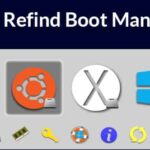But we’re now in 2019, and there are many excellent desktop Linux distributions that are not based on Ubuntu, and we’ve selected five of them for this article and sorted them by their popularity.
Manjaro
Manjaro is based on Arch Linux, a rolling-release distribution for computers based on x86-64 architectures that follows the KISS principle (“keep it simple, stupid”), emphasizing elegance, code correctness, minimalism, and simplicity. Manjaro sticks to the KISS principle as closely as possible, but it also focuses on user-friendliness and accessibility to make the distribution suitable for Linux newbies and veterans alike.
One of the most praise-worthy features of Manjaro is pacman, a versatile package manager borrowed from Arch Linux. To make pacman more user-friendly, Manjaro includes front-end GUI package manager tools called Pamac and Octopi. Three flagship editions of Manjaro are available— XFCE, KDE, and GNOME—but users can also choose from several community editions, including OpenBox, Cinnamon, i3, Awesome, Budgie, MATE, and Deepin. All editions of Manjaro come with a GUI installer and embrace the rolling release model.
By combining the user-friendliness of Ubuntu with the customizability of Arch Linux, Manjaro developers have created a Linux distribution that allows beginners to learn and grow with it and experienced users to get done more in less time. Because Manjaro boots into a live system, you can easily try it either using a virtual machine or by running it from a DVD or USB flash drive.
Solus
Unlike most popular Linux distributions that you come across these days, Solus is a completely independent desktop operating system built from scratch. Its main goal is to offer a cohesive desktop computing experience, which is something many Linux distributions have been trying to do, with mixed results.
Solus is built around Budgie, a desktop environment that uses various GNOME technologies and is developed by the Solus project, but other desktop environments are available as well, including MATE, and GNOME. Budgie shares many design principles with Windows, but it’s far more customizable and flexible.
Solus ships with a whole host of useful software applications to take care of all your computing needs right out of the box. Content creators can animate in Synfig Studio, produce music in Musescore or Mixxx, design and illustrate in GIMP and Inkscape, and edit video in Avidemux or Shotcut. All applications and system components are continuously updated, so there are no large OS updates to worry about.
Fedora
Fedora would never be the Linux distribution of choice of Linus Torvalds, the creator of the Linux kernel, if it didn’t do something right. First released in 2003, Fedora is known for focusing on innovation and offering cutting-edge features that take months to appear in other Linux distributions. The development of this Linux distribution is sponsored by Red Hat, who uses it as the upstream source of the commercial Red Hat Enterprise Linux distribution.
Thanks to built-in Docker support, you can containerize your own apps or deploy containerized apps out of the box on Fedora. The default desktop environment in Fedora is GNOME 3, which was chosen for its user-friendliness and complete support for open source development tools. That said, several other desktop environments, including XFCE, KDE, MATE, and Cinnamon, are available as well.
Just like Ubuntu, Fedora is also great as a server operating system. It features an enterprise-class, scalable database server powered by the open-source PostgreSQL project, brings a new Modular repository that provides additional versions of software on independent lifecycles, and comes with powerful administration tools to help you monitor your system’s performance and status.
openSUSE
Once known as SUSE Linux and SuSE Linux Professional, openSUSE is a popular Linux distribution that offers two distinct release models: rolling release and 2/3–3/4 years per fixed release. openSUSE Tumbleweed provides the rolling release model, while openSUSE Leap provides the traditional release model.
Regardless of which release model you choose, you can always access all openSUSE tools, including the comprehensive Linux system configuration and installation tool YaST, the open and complete distribution development platform Open Build Service, or the powerful Linux software management engine ZYpp, which provides the backend for the default command line package management tool for openSUSE, zypper.
OpenSUSE has been around since 2005, and it’s now in the hands of Swedish private equity group EQT Partners, which purchased it for $2.5 billion in July 2018. The acquisition didn’t affect the distribution’s development in any way, and SUSE developers expect the partnership with EQT to help it exploit the excellent market opportunity both in the Linux operating system area and in emerging product groups in the open source space, according to its official press release.
Debian
You probably know that Ubuntu is a Debian-based Linux distribution, but you may not know that Debian is actually a great alternative to Ubuntu. Not only is Debian one of the earliest Linux distributions in the world, but it’s also one of the most active, with over 51,000 packages and translations in 75 languages.
Since its beginning in 1993, Debian has been firmly committed to free software. The famous Debian Social Contract states that the distribution will always remain 100 percent free and will never require the use of a non-free component. It also states that Debian developers will always give back to the free software community by communicating things such as bug fixes to upstream authors.
Before you download and install Debian, you should familiarize yourself with its three main branches. The Stable branch targets stable and well-tested software to provide maximum stability. The Testing branch includes software that has received some testing but is not ready to be included in the Stable branch just yet. Finally, the Unstable branch includes bleeding-edge software that is likely to have some bugs.









